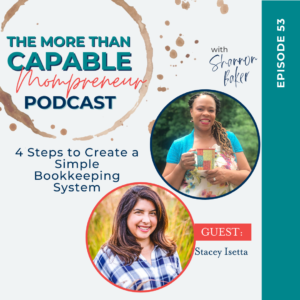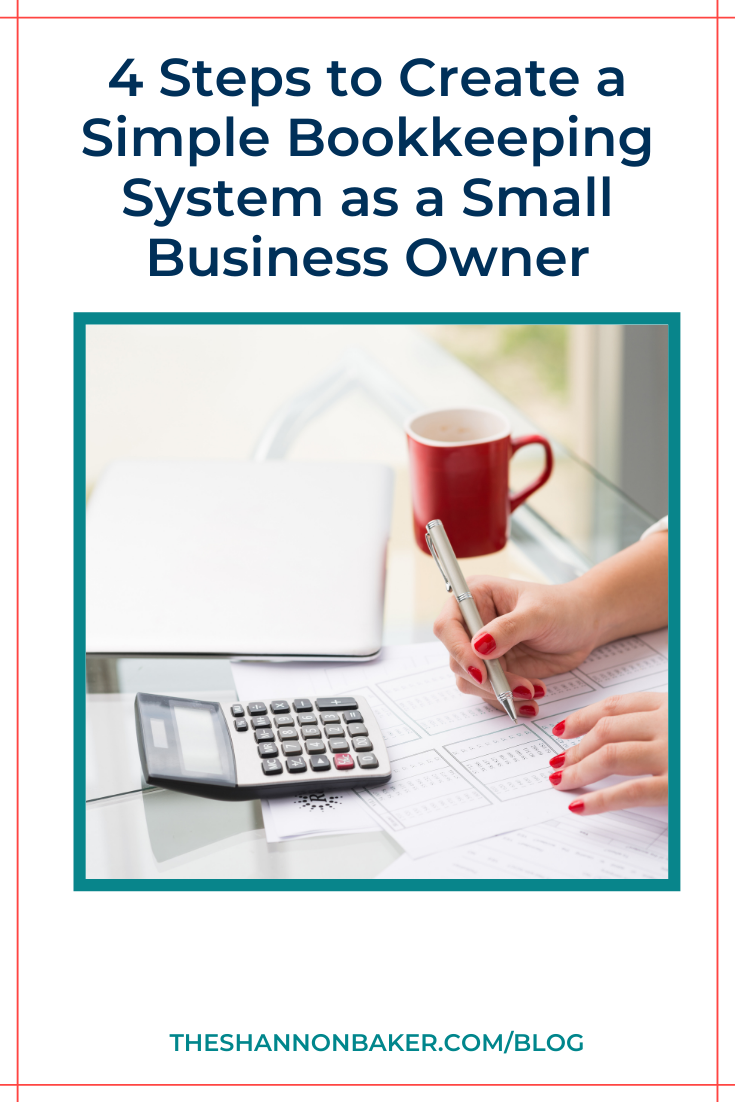You need a simple bookkeeping system! Why? Because your business can’t go anywhere if you don’t understand the numbers.
Do you know your numbers as a business owner or are you afraid of them? Well you need to know your numbers because knowledge is power. So it’s time to face your fears. Yes, I know bookkeeping is extremely dry and boring, but it is one of the foundational pieces that will really move the needle forward in your business.
A lot of small business owners are afraid of the numbers and their business suffers because of that fear. Money is a tool that allows you to pursue more opportunities in your life and in your business. A simple bookkeeping system with automation will help you develop a more positive mindset about money. After all, a financial management system is one of the core systems every business needs. Learn about all six systems in this blog post.
So what needs to be in your basic bookkeeping system? That’s what my chat with Stacey Isetta of The Small Business BFF is all about!
During our chat, Stacey shares a simple process that will help you create a bookkeeping system that will help you keep an eye on your numbers. After all, she is your best financial friend so you know she shared some helpful tips. And you can maintain this system in as little as 10 minutes a week!
“I want to teach everyone else how to do this stuff so that they can have those foundational pieces put in place and grow with confidence and side their financial lives.” – Stacey Isetta
A bookkeeping system also allows you to track the important matrix, like sales, revenue, net income, return on investments, and how much your business is growing over time. No business is too small to put a basic bookkeeping system in place. So follow these four steps.
Step 1: Separate Your Money
Be sure to open up a basic business account. Why? It is essential that you keep your books clean and accurate. so keep your money separate. It just makes it a whole lot simpler as time goes on. After you’ve determined your business structure you are going to get your tax ID number so that you can provide that to the bank.
Step 2: Choose Your Tracking Method
If you are just starting out, can use Excel pretty succesffuly and don’t have a lot of transactions, a spreadsheet would be a fine place to start. For a very small cost per month, consider using QuickBooks, Xero or Wave.
When you use accounting software you can automate transactions which is a key piece to having a quick and easy and accurate bookkeeping system. And QuickBooks is not a challenge to learn!
It should only take you like 10 minutes a week to process your transactions. Rachel recommends taking 10 minutes a week on Tuesdays to do your bookkeeping because it captures all of the transactions that happened over the weekend.
Step 3: Set-up Your Categories
There are different types of transactions that we track throughout the year, income and expenses. Every transaction should include details when you’re entering them, even if you’re entering them into a spreadsheet. Make sure you have the date, the amount, the payee or who paid you. Then note if it’s income or an expense, so positive or negative.
You want to track each stream of income. So if you have different services, you want to track the revenue coming from each type of product or service. Be sure to grab the BFF blueprint download. It identifies the different categories that you would want to include in your bookkeeping system, both income and expense accounts.
Step 4: Set Aside Bookkeeping Time
You can get in and out of a simple bookkeeping system very quickly. It should only take you 10 to 20 minutes a week once you get it set-up. You want to choose a time a day and time that you spend on this each week.
So if you put your CFO hat on on Tuesdays, if you’re business checking account is tied to your accounting software you just go in and click yes to all of the things that have happened. Then when that is done, you have a chance to put together a weekly scorecard which is where you’re going to track the matrix of your business money. There are tips in Stacey’s Instagram feed about the business scorecard. It’s a great way to track progress on your sales and other financial goals you might have inside your business. And you can translate that over to how it’s coming into your family life as well.
If you get all of those pieces of a basic bookkeeping system in place, maybe you fear of numbers will slowly go away. Start to embrace them because they actually give you more confidence, especially when you have your finger on the pulse of your bank account.
To hear all of my chat with Stacey and get more details on the steps to creating a basic bookkeeping system in this blog post, tune in to episode 53 of the podcast. Click below and tune in on your favorite platform.

Connect with Stacey Online:
Follow Stacey on Instagram: @thesmallbusinessbff
Grab a copy of BFF Bookkeeping Basics
Connect with me online
Follow Me On Instagram: @the_shannonbaker





Pingback: 3 Areas of Your Business Operations That Need Spring Cleaning -